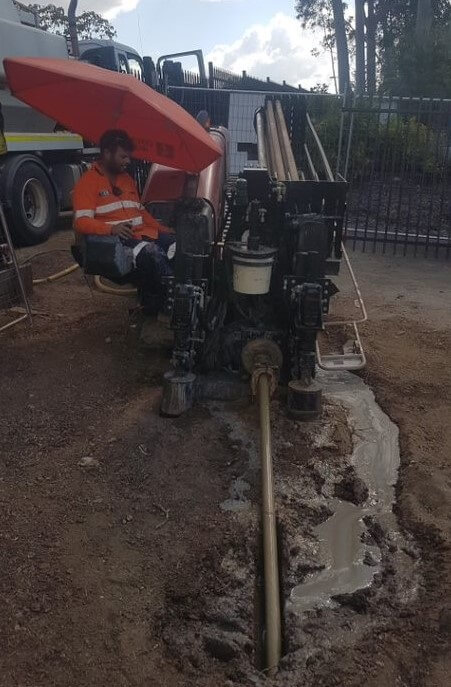From the Surface and going to the Subsurface: Exploring the Directional Drilling Process

Directional drilling techniques has transformed the landscape of multiple industries, providing innovative solutions that go beyond traditional drilling methods. As metropolises grow and the requirement for construction rises, the requirement for effective and environmentally friendly drilling techniques has never been higher. This article serves as a thorough guide to grasping the journey of directional drilling, investigating its development, benefits, and multiple applications in today’s world.
From oil and gas mining to service installation and green energy initiatives, directional drilling plays a essential role in lessening surface disruption and enhancing work efficiency. By delving into the mechanical aspects of the process, we will highlight the main differences between vertical and sideways drilling, the tools involved, and how current technology is transforming the path of this necessary practice. Join us as we navigate the intricacies of directional drilling, uncovering insights that are critical for industry professionals and anyone interested about this vibrant field.
Understanding Directional Borehole Drilling
Directional borehole drilling is a sophisticated drilling technique that enables operators to bore angled wellbores. https://dev-westudy.accedo.gr/members/pearjet6/activity/2829981/ is particularly beneficial in situations where reaching subsurface resources from a conventional vertical well would be inefficient or impractical. By changing the angle of the drill bit, operators can access targets that are located at a distance from the surface location, making it suitable for harvesting oil, gas, and other natural resources from challenging environments.
The evolution of this drilling technique technology has greatly enhanced its applications across various industries. Initially created for the oil and gas sector, directional drilling has found its way into utility installation and renewable energy projects. The ability to maneuver and drill complex paths underground has not only improved resource extraction but has also minimized surface disruption, safeguarding the environment and facilities above ground.
Directional drilling relies on a complex array of tools and techniques that ensure precision and efficiency. Factors like bore tracking and monitoring are essential to the effectiveness of these operations, allowing real-time adjustments to the drilling path. Through advancements in technology, such as mud motors and specialized drill bits, the industry continues to enhance its methods, paving the way for more sustainable and effective drilling practices.
Benefits of Directional
Directional offers a variety of advantages over traditional vertical drilling techniques. One of the key benefits is its ability to reduce land disruption. By drilling at different angles and depths, operators can access resources without disturbing large areas of land. This is particularly essential in urban environments where real estate is scarce and the impact on the surrounding infrastructure must be thoroughly managed.
Financial savings are another important factor that makes Directional desirable. The ability to drill several wells from a one surface location reduces the total drilling footprint, leading to reduced mobilization and logistics costs. Additionally, Directional Drilling often allows for faster project completion, translating to lower labor and operational expenses. As a result, businesses can enhance their return on investment while efficiently managing their project budgets.
Finally, Directional Drilling provides environmental benefits that are more vital in today's climate-conscious world. The minimized surface disturbance not just protects the landscape but also minimizes the possible impact on local ecosystems. This approach is perfect for projects in vulnerable areas, such as close to water bodies or wildlife habitats. By opting for Directional, companies demonstrate their commitment to sustainable practices while still achieving their operational objectives.

Upcoming Developments in Directional Drilling
The future of horizontal drilling is positioned for significant advancements as technology continues to evolve. Innovations in automation and AI are expected to enhance drilling accuracy and efficiency. With AI-driven systems analyzing real-time data, operators can make informed decisions that refine the drilling process, reduce risks, and enhance safety measures. These technological advancements not only streamline operations but also lead to more precise drilling paths, thereby minimizing environmental impacts.
Furthermore, the combination of digital tools and sensors is changing the arena of directional drilling. Feedback systems that provide real-time feedback on bore conditions will play a vital role in boosting the reliability of drilling projects. As these tools become readily available, they will facilitate better planning and execution, ensuring adherence to project timelines and financial plans. In an ever more complicated urban environment, the ability to track drilling conditions in real-time will be critical for avoiding hindrances and managing risks effectively.
As sustainability becomes a focus, directional drilling will probably see a increased emphasis on environmentally friendly practices. The sector's focus on reducing surface disruption and minimizing impact on local ecosystems is consistent with global efforts to develop sustainable infrastructure. Future innovations may lead to the introduction of biodegradable drilling fluids and more efficient waste management systems. By adopting these changes, the directional drilling sector can continue to meet the demands of contemporary construction while promoting environmental stewardship.
